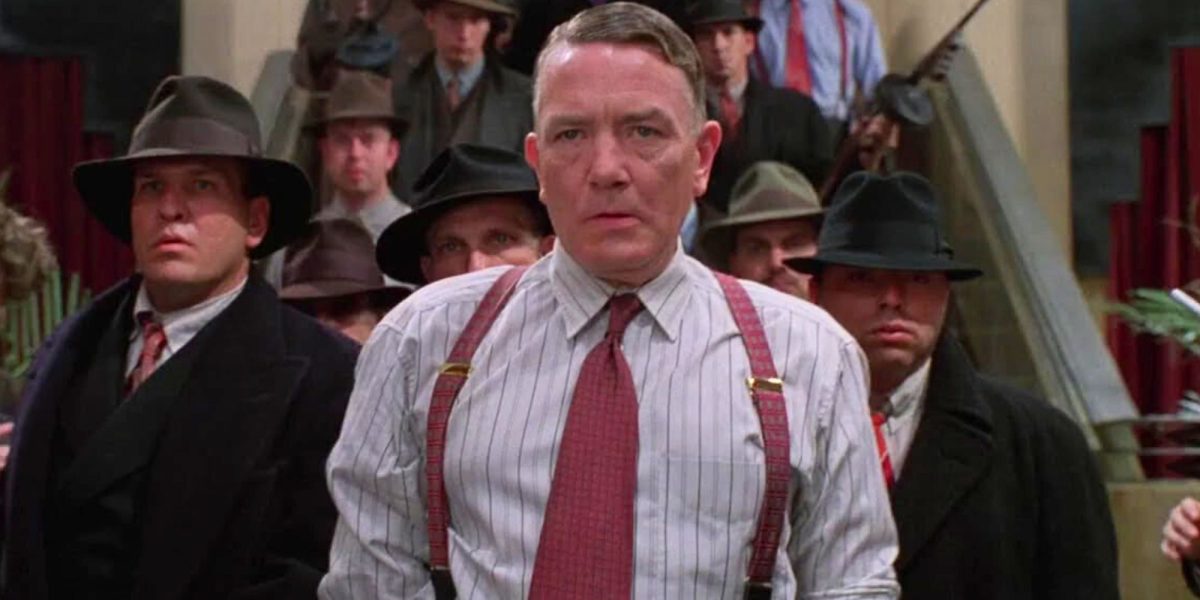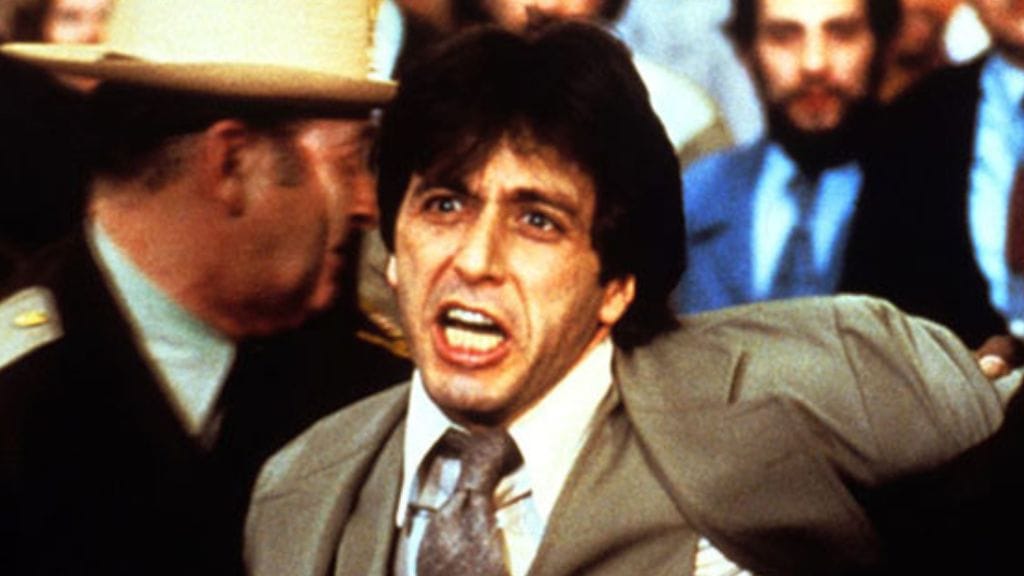
How the Coen Brothers Made One of the Most Beautiful, Overlooked Gangster Movies Ever
Oct 23, 2024
In the year 1990, two seminal gangster films were released within months of each other. On one end, Goodfellas served as the culmination of Martin Scorsese’s career and the gangster genre entirely, showing that the criminal underworld was both a raucous party and a nightmarish undertaking on the heart and mind. On the other end, The Godfather: Part III signaled a desperate return to glory and mainstream adoration by Francis Ford Coppola, who failed to live up to the soaring heights of the first two. Operating beneath the fanfare of these two films was Miller’s Crossing, the most cerebral and poetic gangster film in recent memory by Joel Coen and Ethan Coen. Misunderstood when released, the film is the quintessential Coen brothers movie, combining their love of noir literature with characters who are trapped within their own headspace. It is a gritty gun-toting crime thriller–until it isn’t, as the Coens search deep into the soul of the gangster archetype and the genre itself.
The Coen Brothers Take a Soulful Approach to the Gangster Genre in ‘Miller’s Crossing’
Image via 20th Century Studios
Following Raising Arizona, the Coens’ rip-roaring black comedy about two parents on the run, the directing pair was red-hot. Their vibrant film language and unique ear for dialogue cause their viewers to become full-blown disciples of their craft. If there’s anything to know about the Coen brothers, they don’t follow typical career paths or decisions. On the surface, Miller’s Crossing, set in the milieu of organized crime during Prohibition, was a return to their grimy noir debut, Blood Simple. The duo would often jump between gritty noirs and zany comedies, but Miller’s Crossing is one of their many undefinable films, one that seems rudimentary at first glance but is packed with literary levels of textual depth. The film follows Tom Reagan (Gabriel Byrne), an advisor to a mighty crime boss, Leo (Albert Finney), who tries to maintain peace between him and a rival mob boss, Johnny Caspar (Jon Polito). Along the way, his indecisiveness causes an unshakable psychological conflict, as he sits in the middle of a violent feud.
A film filled with satisfying visceral thrills and meditative poignancy, Miller’s Crossing is a Trojan Horse of the gangster genre. Heavily influenced by the work of pulp novelist Dashiell Hammett, particularly Red Harvest and The Glass Key, as well as other classic Warner Bros. gangster films, the Coens’ exceptionally channel the rich formalism of the genre. The period setting and attire ooze with personality and flavor. You feel an attachment to these immoral characters, the genre’s ultimate magic trick. The Coens love to sample their favorite films and books of the past, integrate them with their keen eye for visual storytelling and dialogue, and concoct something unique, despite the throwback nature of their recipe. As the film’s psychology begins to unpack itself, Miller’s Crossing unexpectedly plays as a subversive deconstruction of gangster tropes and their character archetypes. The dramatic crux of the story is far less concerned with killings and more to do with watching Tom Reagan just figure out who he is as a person.
‘Miller’s Crossing’ Presents Characters Stuck Inside Their Own Heads
While drafting Miller’s Crossing, Joel and Ethan Coen suffered from writer’s block. Needing to separate themselves from this dense story, they went ahead and wrote the entire script for their next film, Barton Fink, the story of a hapless playwright sucked into the world of Hollywood screenwriting and feverishly trapped inside his own head. No film has so clearly expressed a writer working through creative roadblocks on the screen quite like Miller’s Crossing. While the Coens are known for their precision with the camera and the page (it may seem prevalent, but improvising is a rarity on their sets), Tom is shown to be an influential figure in this mob turf war, but he keeps losing his head, literally and figuratively. He loses his hat in the wind and desperately chases it down, symbolizing his loss of control. The character’s knack for endlessly vacillating his loyalty to all parties, Leo, Caspar, and bookie Bernie Bernbaum (John Turturro), connects to the Coens’ preference for neurotic characters who seemingly have the perfect plan right up until one thing goes awry, as seen with their crime-gone-wrong masterpieces, Fargo and No Country For Old Men.
Miller’s Crossing was a dud at the box office, earning a lowly $5 million when released in 1990. Even though it had the makings of a familiarly satisfying crime/noir thriller, the film is just too opaque and meditative to become a highly commercial product. Because it is such a cerebral exercise, packed with a litany of allusions to film history, Miller’s Crossing is the Coen brothers’ most rewarding film to re-watch. The beauty of the Coens’ filmography is that each movie can be wholly appreciated at face value. You can watch The Big Lebowski merely for non-stop laughs, but if you wish to examine it on a more comprehensive level, it has enough textual weight to unpack for a semester of film theory classes. However, the duo’s indelible convergence of classic gangster films and hard-boiled noirs requires constant psychoanalysis on the viewer’s part, as it is a story existing inside someone’s cramped headspace.
The Moral Ambivalence of Crime in ‘Miller’s Crossing’
Image via 20th Century Studios
Aided by the Coens’ flair for dry humor, razor-sharp dialogue, and wistful malaise, Miller’s Crossing is a soulful, emotionally involving portrait of organized crime and a man stuck in between a rock and a hard place. In the opening scene, an offscreen gangster implores Leo to consider “ethics” in his line of thinking, a statement meant to underline apparent irony that equally suits each character’s introspection. Leo knows right from wrong in their social and professional field, but it still doesn’t stop them from making haphazard decisions, such as being smitten by Bernie’s sister, Verna (Marcia Gay Harden). Tom eventually engages in an affair with Verna, evocative of classic Hollywood bombshells, as a ploy against Bernie in this turf war. Tom and Leo partake in a tug-of-war between the heart and the mind, sentimentality and intellectualism. While the best gangster films examine morally gray figures, Miller’s Crossing presents its characters wrestling with their conscience in real time.
In particular, Tom grapples with his own existence as a gangster with a code who’s simultaneously lost in the wilderness. When recalling a dream he had where he loses his hat in the wind to Verna, she inhabits the role of a critic analyzing the Coens’ work. She presumes that Tom retrieved his hat and discovered that the hat had transformed into something with deep sentimentality. “Nah,” Tom responds. He didn’t chase the hat, as, according to Tom, there is “nothin’ more foolish than a man chasing his hat.” He can’t get too caught up in allegory, or else he’ll be facing the wrong end of a Tommy gun. The lyrical reflections of Miller’s Crossing extract the soulfulness in characters usually devoid of an emotional core due to the gritty confines of the gangster genre.
The Coen Brothers Evolved the Gangster Genre in ‘Miller’s Crossing’
Miller’s Crossing exists in a fascinating place within the context of the gangster genre. 1990 was a pivotal year for gangster movies, with Goodfellas paving the way for the future and cementing Martin Scorsese’s status as a master filmmaker, while The Godfather Part III, on the contrary, unceremoniously returned to Francis Ford Coppola’s previous glory without the rewards. By showing the blistering realities of organized crime and its associated life of excess, Scorsese painted a sobering reflection of the criminal underworld, stripping it of its Godfather-esque mythology in favor of harsh verisimilitude. In fairness to The Godfather Part III, it attempted to amend any misinterpretations about the life of Michael Corleone (Al Pacino) by presenting him as a broken man, whose reformation is motivated by his desire to reclaim his soul.
Miller’s Crossing, as typical of Joel and Ethan Coen, operates in its own stratosphere. The directors dip their toes into the history and traditions of the genre while simultaneously carving their own emotionality and iconography into the world of gangsters and bootleggers. These meditative characters, constantly stewing over every decision and their place in the hierarchy in the underworld, pique the interest of viewers looking to dissect every frame of the film as an inflammatory indictment of the genre’s tropes. If there’s one character archetype the Coens have mastered, it is the hapless buffoon, hilariously underlined in Raising Arizona, Fargo, The Big Lebowski, and Burn After Reading. Nearly every Coens film features characters whose woeful incompetence or irrational instincts entangle them in an irreversible dilemma. The directors have such a knack for punitive character treatment that it makes one wonder if they despise all of their characters.
The Coens’ ingeniousness as filmmakers is evident in their delicate creation of the “idiot” character. Simply put, the Coens have a precise handle on crafting smart idiots. These characters, mostly bumbling criminals or aspiring artists, possess enough self-awareness to reflect on their surroundings. Even though Tom Reagan and Berne Bernbaum recognize the fatalistic nature of their profession, they are resigned to following their disposition. For Tom, he is forever a pawn for Leo. For Bernie, he knows his match-fixing scheme will send him to the slaughter. As he sits on his knees before Tom, who is ordered to kill Bernie, he implores Tom to look into his heart. This resonates with the jaded mafia soldier, and fakes the assassination, allowing Bernie to flee. The Coens posit a theory that, when these hard-nosed gangsters think about their emotionality for just one second, their professional ethics and moral principles become one jumbled mess.
Miller’s Crossing Miller’s Crossing: In 1929, a political boss and his trusted advisor experience a rift in their relationship when romantic interests overlap, leading to a complex exploration of loyalty and betrayal. Amidst the backdrop of Prohibition-era crime, their actions resonate through the criminal underworld, revealing deeper power struggles and personal conflicts.Release Date September 21, 1990 Director Joel Coen , Ethan Coen Runtime 115 Minutes
Miller’s Crossing is available to rent on Prime Video in the U.S.
Rent on Prime Video
Publisher: Source link
SpongeBob Cast Shares Heartfelt Favorite Episodes
I asked two main questions throughout our conversation. My first question: It's been 25 years of iconic quotes, hilarious episodes, and memorable moments. From the perspective of the people who voiced the characters and produced the show, is there a…
Dec 23, 2024
Erin Andrews Shares Her Celine Dion-Inspired Holiday Tradition
We interviewed Erin Andrews because we think you'll like her picks. Some of the products featured are from Erin's brand WEAR by Erin Andrews. Our writers and editors independently determine what we cover and recommend. When you buy through our links,…
Dec 23, 2024
TV Shows That Got Canceled In 2024
TV Shows That Got Canceled In 2024 Which 2024 canceled TV show will you miss the most? Share your pick in the comments! Disclaimer: This story is auto-aggregated by a computer program and has not been created or edited by…
Dec 22, 2024
How The Talk Emotionally Ended After 15 Years
The Talk has officially said "Goodbye." After 15 seasons and 2,993 episodes, the CBS daytime show came to an end on Dec. 20 with a heartfelt farewell from hosts Akbar Gbajabiamila, Amanda Kloots, Natalie Morales, Jerry O'Connell and Sheryl Underwood. The episode began with a standing ovation for the…
Dec 22, 2024











